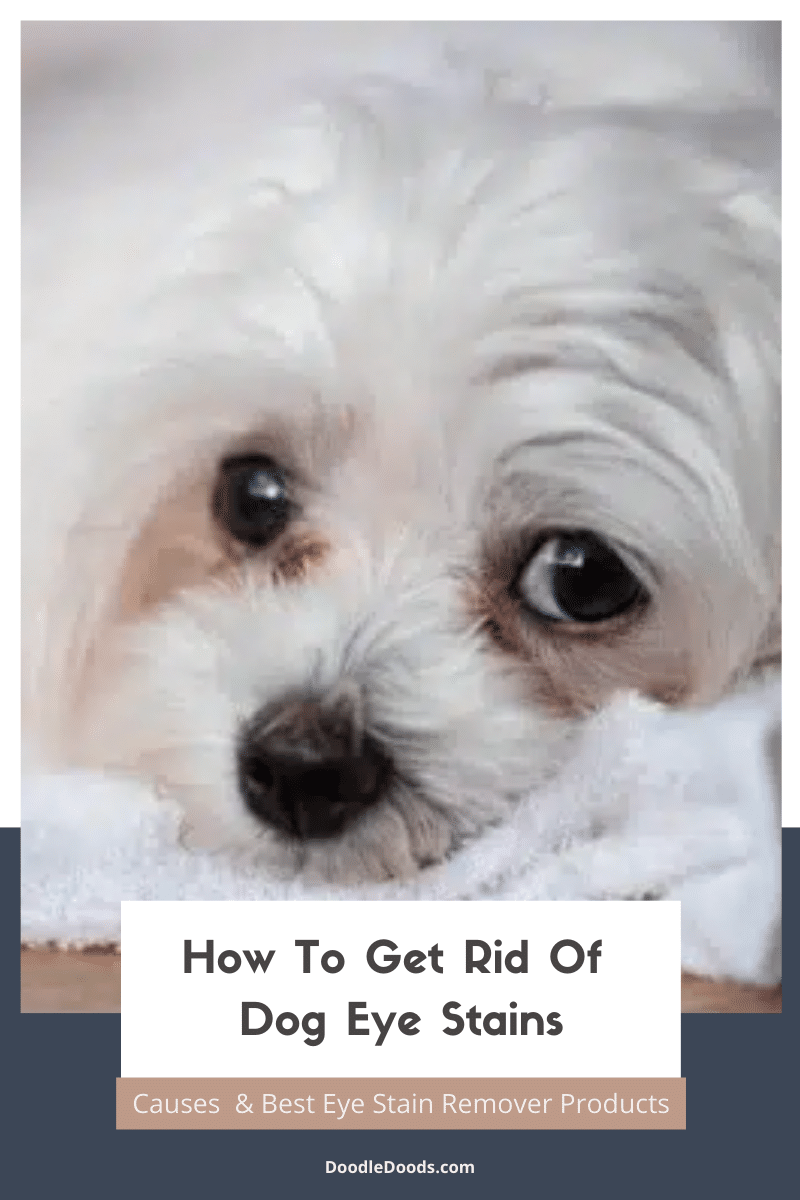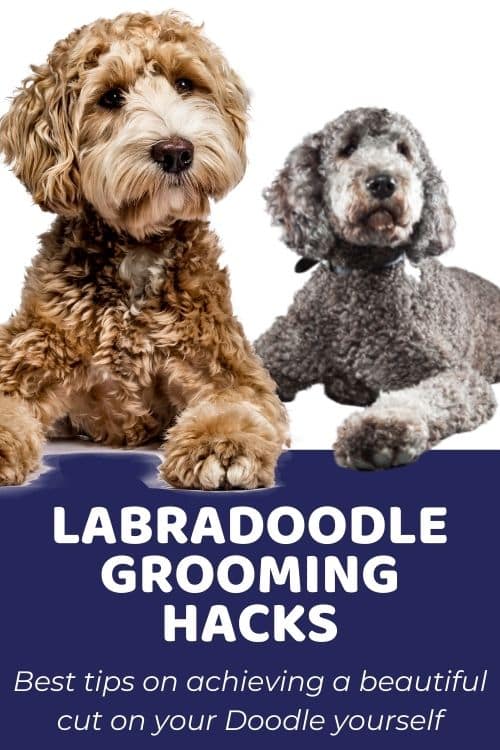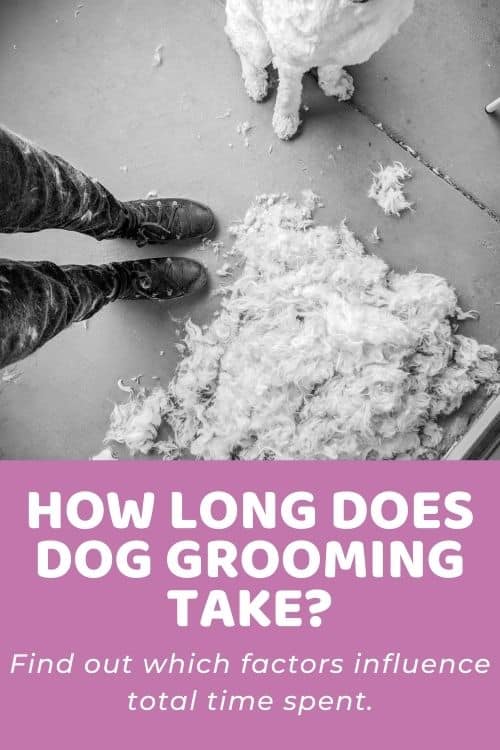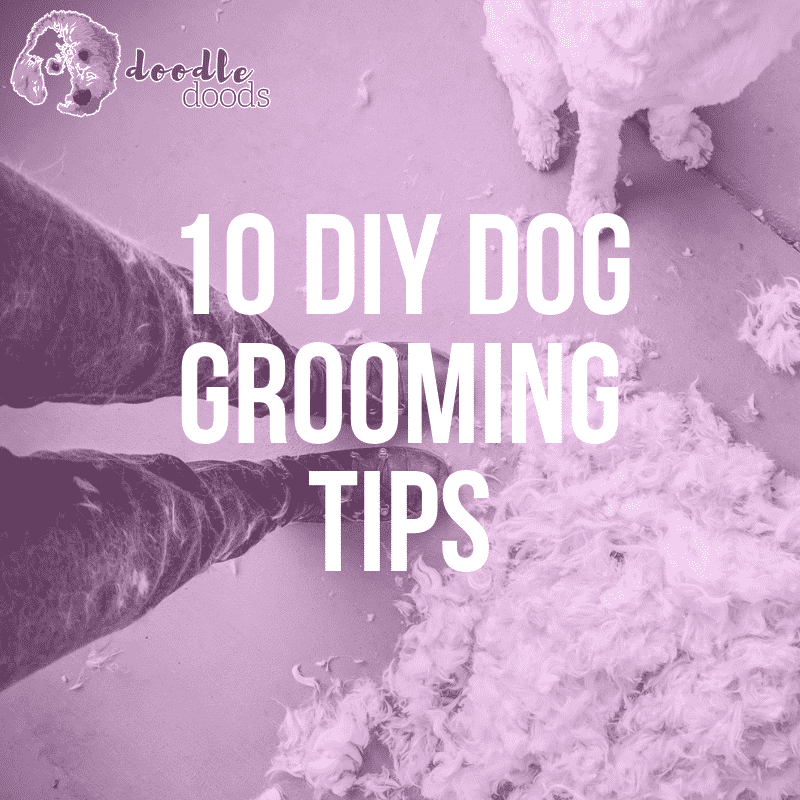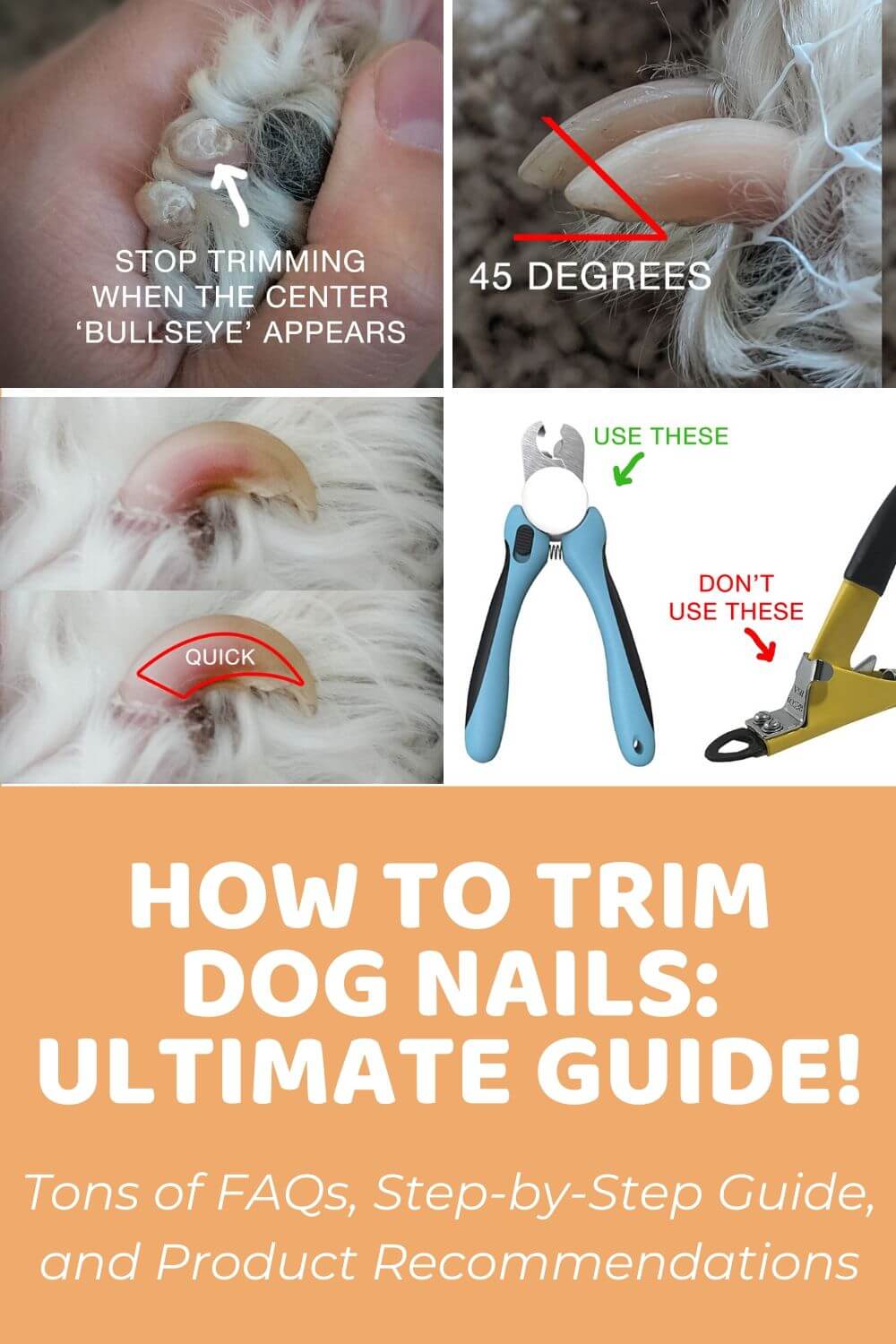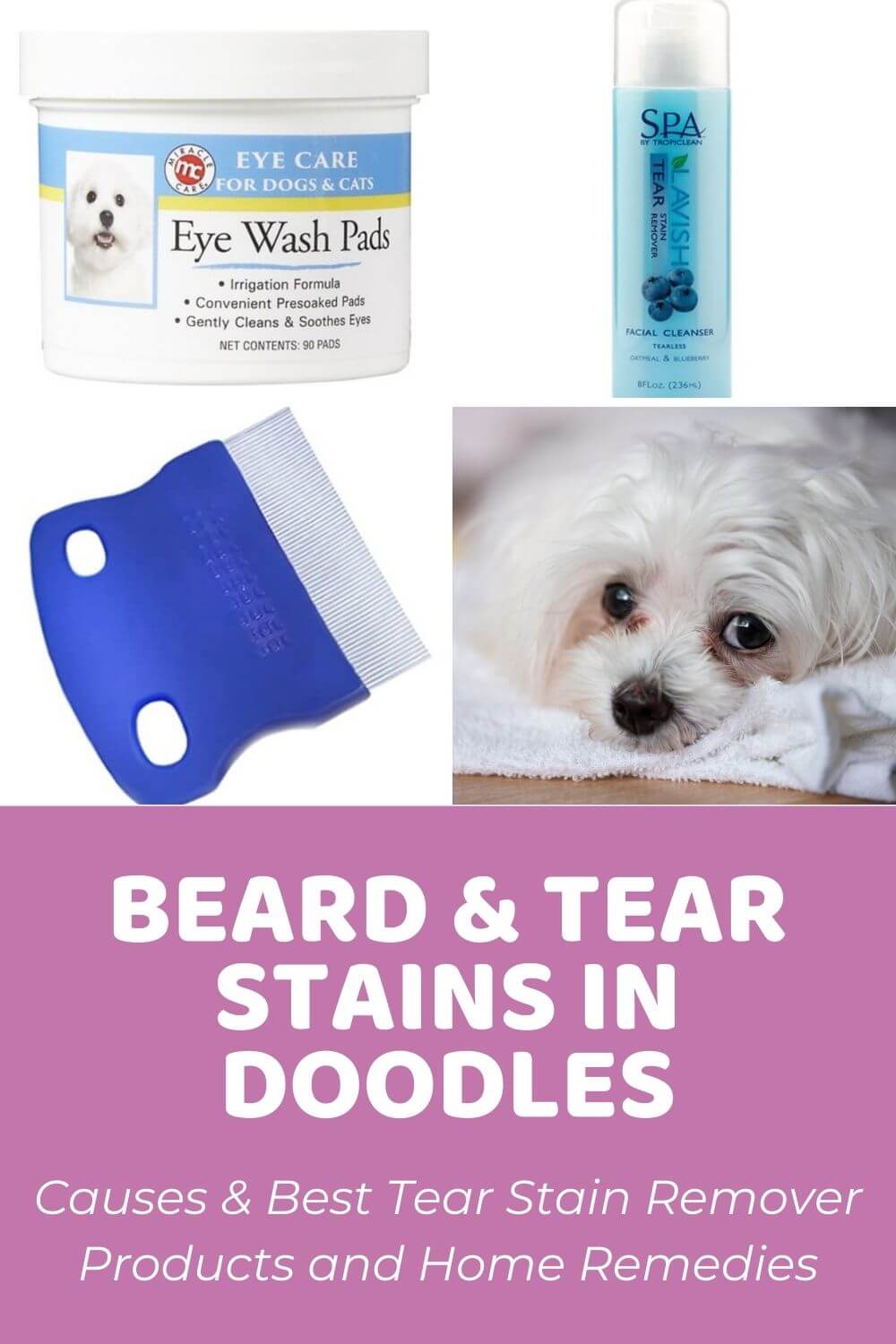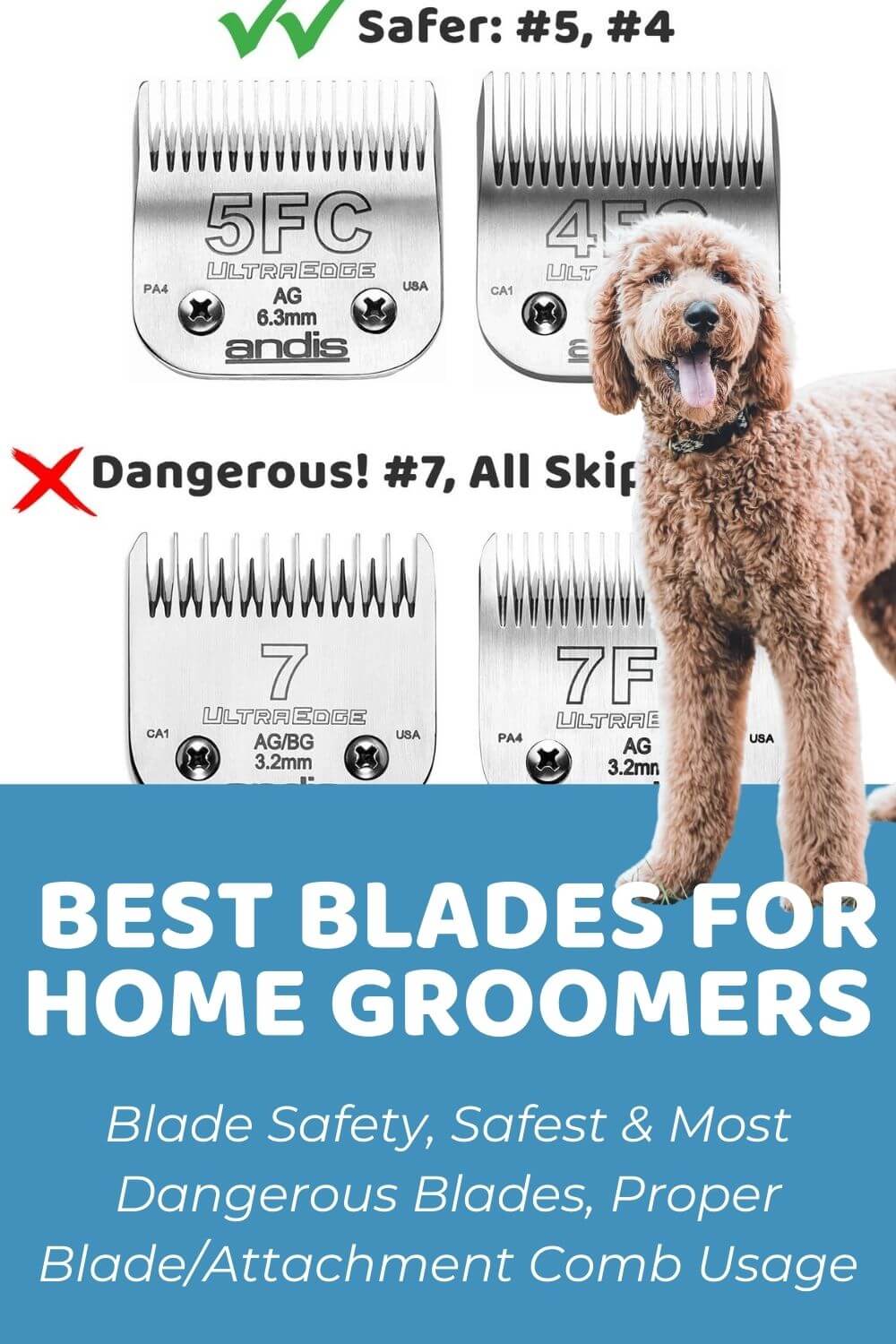How to get rid of dog eye stains – that’s got to be one of the most common questions that we get asked. While some breeds are more prone to developing those pesky tear stains, others might have them due to certain health conditions or even because of a deficiency in their diet. In this guide, we’re going to talk about the most common causes of eye stains in dogs, as well as provide you with some excellent tips on how to get rid of your dog’s eye stain. In addition to that, we’ve lined up here some of the best products that are completely safe to use on our canine pals. Let’s get started!
Table of Contents
- How To Get Rid Of Dog Eye Stains: Intro
- What Are Tear Stains In Dogs?
- What Causes Brown Tear Stains In Dogs?
- 5 Proven Steps To Get Rid Of Dog Eye Stain
- How Can I Get Rid Of Dog Eye Stain Naturally?
- 4 Best Products To Get Rid Of Dog Eye Stain In 2023
- How To Get Rid Of Dog Eye Stains: The Do’s And Don’ts Of Removing Dog Eye Stain
- How To Get Rid Of Dog Eye Stain: FAQs
How To Get Rid Of Dog Eye Stains: Intro
If you’ve got a dog, you know that they drool, excrete tears, and lick themselves. All of which can leave behind dark-colored stains. Some of our pals can be just overall messy in that sense! Not that it’s their fault, of course…
So, you’ve got the most beautiful dog anyone’s ever seen (after all, your own fur baby is the cutest in the world!), but you can’t quite figure out what to do with those stubborn stains around the eye area. Although that doesn’t take any cuteness away from your pup, it sure can make their overall appearance look a bit unkempt.
But even more importantly, if the tearing becomes excessive, it could indicate that there’s something more serious to be dealt with. In addition to that, if your dog does tear excessively, it creates the perfect breeding ground for bacteria, which may result in yeast infections.
What Are Tear Stains In Dogs?
Like we humans tend to tear from time to time, so do dogs. Tear stains are those discolored spots that you notice on the fur around your dog’s eyes. Those stains are generally caused by a pigment called porphyrin. To be fair, the excess production of it. This compound isn’t found in just tears, but also saliva and urine.
Porphyrin is rich in iron – this is what makes those tear stains become reddish-brown over time. In fact, the more that discolored fur is exposed to sunlight, the darker they tend to get. That’s why proper grooming and hygiene is so vital.
Interestingly, some breeds are more prone to developing those dark tear stains, such as Maltese and Yorkshire Terriers. Additionally, there are many other factors that could lead to excess tear production and the consequent staining. So, if you’re trying to figure out how to get rid of dog eye stains, it’s important to first understand what might be the root cause.
We asked our newsletter readers if their Doods are prone to tear stains. Here are the results:
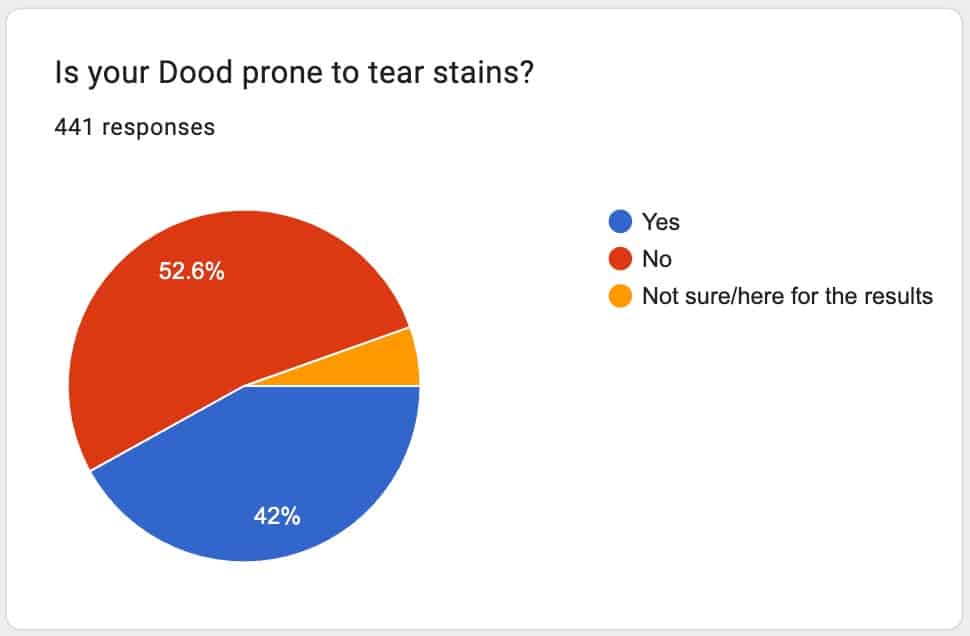
What Causes Brown Tear Stains In Dogs?
Poor Grooming
More often than not, those dark-colored tear stains are caused by improper grooming of the eye area. As we mentioned earlier, it’s completely natural for dogs to produce that nasty eye gunk and tears. However, if you don’t deal with it immediately, you’ll soon have to tackle all that built-up discoloration.
Likewise, if your dog has very long hair around the eyes, and you don’t put much effort into trimming it, the tear stains are bound to be more prominent. Excessively long hair can also interfere with proper tear production, so that’s something worth keeping in mind.
Allergies Or Eye Infections
Allergies, eye infections, and even ear infections can all cause excessive tear production. Just like we tend to get watery eyes if we’re triggered by certain allergens, the same happens with dogs. Some of the most common allergens causing excess tear production could even be found in their diet, simple household chemicals that you use for cleaning, or environmental factors, such as pollen or dust.
Dog Breed And Color
Another thing you might want to consider is your dog’s breed and coat color. For instance, certain breeds are more prone to tear stains, like brachycephalic breeds or light-colored dogs. Nonetheless, dark tear stains can happen with almost any breed of dog.
Yeast Or Bacterial Infections
As we briefly mentioned above, the excessive tearing can lead to yeast infections, as the constant moisture is the perfect place for bacteria to start multiplying. Consequently, the tear stains tend to become even darker once your pup has caught an infection. In addition to that, bacterial infections could also be to blame for excessive tearing and those dark-colored eye stains.
Glaucoma
Glaucoma is a serious eye disease that’s caused by increased pressure within the eye. The excessive pressure generally occurs when the eyes produce more fluid than they can drain. Not only does glaucoma cause excessive tearing and watery discharge, it can be very painful and even lead to blindness. If you suspect an eye disease of any sort, it’s vital that you contact your vet as soon as possible for a proper assessment, diagnosis, and treatment plan.
Corneal Ulcers
Corneal ulcers is another eye disease that can cause excessive tearing. Generally, this condition is caused by a trauma or scarring of the cornea. While certain breeds, such as brachycephalic breeds are at a higher risk of this condition due to their bulging eyes, any dog can develop corneal ulcers if they’ve gotten something sharp into their eye.
This can even happen during a rough playtime either outdoors or indoors, or if you’re not mindful enough of what your dog has access to. For example, if your dog also likes to dig excessively, they may accidentally get a sharp piece of glass or debris into their eye, causing trauma and scarring to the cornea.
Teething
Interestingly enough, teething could also be a possible reason why your dog is tearing excessively. It’s an uncomfortable, often even painful stage in a puppy’s life that not only affects the teeth and gums, but can also cause some rather unpleasant side effects, even fever in some cases. Of course, with all that discomfort and unpleasant feeling, it’s not uncommon for puppies to start tearing excessively. After all, there’s massive pressure put onto their gums, which aren’t that far away from their eyes, either!
Ingrown Eyelashes
Although your dog’s eyelashes may not be as visible as your own due to their furry appearance overall, they do, in fact, have eyelashes. However, some dogs may experience either ingrown or abnormal eyelashes. If that’s the case, those ingrown eyelashes could potentially block the tear ducts, resulting in discomfort, irritation, and excessive tearing.
Shallow Eye Sockets
We’ve mentioned a couple of times already how brachycephalic breeds are more common to excessive tearing and eye stains. Another possible cause for this is that they have shallow eye sockets, which can often interfere with proper tear production and excretion. This in turn can lead to issues with drainage, and therefore put a dog at risk of developing glaucoma.
Entropion (Inverted Eyelids)
Entropion is a condition where eyelids become inverted, as in they roll inward instead of the usual outward position. When this happens, it could lead to pain and discomfort, as the eyelids and eyelashes rub against the cornea. As a result, this puts a dog at a higher risk of developing corneal ulcers, which is another common cause for excessive tearing. Of course, entropion could also affect your dog’s vision, which makes it that much more important to consult with your veterinarian (as with any other eye disease or issue).
Unbalanced Diet
Lastly, excessive tear production and staining could also be down to an unhealthy, unbalanced diet that you’re feeding your pup. In fact, lower-tier dog food formulas often contain unnecessary filler ingredients that are known to sometimes increase porphyrin production. As a result, the eye stains may become even darker, as your dog’s body is simply producing too much porphyrin due to their diet.
Similarly, if you live in an area where the tap water is high in iron, you might not have to look far for the culprit. As porphyrins are iron-containing molecules, the iron rich tap water may very well cause those darkened stains around the eyes, but also on the beard.
5 Proven Steps To Get Rid Of Dog Eye Stain
So, how to get rid of dog eye stains? Although there are numerous possible causes for this issue, there are quite a few simple ways how you can tackle it. Fortunately, most of the time the tear stains are caused by simple lifestyle habits and environmental factors that you can easily fix with a few changes. Other times, however, the solution may require a bit more effort. Let’s take a closer look.
Keep The Eye Area Clean At All Times
One of the easiest, most effective things you can do is to keep your dog’s eye area clean from any sort of eye gunk and tearing. This type of discharge is completely normal for dogs. However, if you don’t ever clean it up, the eye gunk and tearing is bound to build up, causing those unsightly tear stains.
A simple way to fix that is to clean your dog’s eyes a couple of times a day – basically any time you notice that some eye gunk has appeared. Of course, make sure that you use either a clean, soft tissue, cloth, or cotton ball that’s slightly damp. You can even use your own clean fingers. The keyword here is “clean”! In addition to that, make sure that you’re not poking your dog’s eyes. We want to avoid any trauma to the corneas! Rather, you want to gently clean the fur around (mainly below) the eyes to get rid of any discharge.
If you consistently get rid of any of that eye gunk, there’s a much smaller chance of those dark tear stains appearing around your dog’s eyes. You can even use a specially formulated tear stain remover. Don’t go anywhere, as we’ll recommend some of our favorite dog-safe products later on in this guide.
Groom Your Dog!
Grooming is another simple way to prevent and treat those dark-colored stains around your dog’s eyes. Trimming the hair around the eyes is one of the most effective solutions for this issue. First of all, if you keep the fur around the eyes all nice and trimmed, it’s going to be much less likely to cause any irritation of the eyes or blockages in the tear ducts.
Secondly, this will also prevent moisture from eye dunk and tear production getting stuck in thick fur. And as we know, excessive moisture quickly paves the way to yeast and bacterial infections, resulting in stained fur. It’ll also be much easier to clean up any eye messes if your pup’s hair around the eyes is nicely trimmed. This is especially important for dogs that require regular hair trims anyway!
By the way, trimming the hair around the eyes isn’t difficult and it doesn’t take much time, either. Our guide DIY Dog Grooming: How To Trim Around The Eyes has some helpful tips and a handy tutorial video teaching you exactly how to do it.
Of course, if you’ve got a breed that requires routine haircuts, it’s vital that you stay on top of their grooming routine. You can either learn how to groom your dog at home yourself or take them to a professional dog grooming salon every few months or so.
Use Lubricating Drops To Minimize Allergies During High Seasons
If you’ve got an allergic pup, you may find lubricating drops helpful, especially during those seasons when pollen seems to be everywhere. One trick is to apply dog-safe lubricating eye drops right before you’re taking your pup out for a walk or playtime. This way, the eyes will be protected against environmental factors, such as pollen and dust, which are known to irritate allergic dogs. And as you’re using lubricating drops, it’ll also prevent dryness, itchiness, and irritation. You can also use the drops after you’ve gotten back from your outdoor activities to flush out any debris, dust, and pollen.
Keep in mind that you should only use pet-safe lubricating eye drops. Human eye drops may contain ingredients that can irritate your pup’s eyes, or even be harmful for them. It’s always better to be safe than sorry. So, if you’re in doubt, feel free to consult with your veterinarian.
Feed Your Pup A Healthy & Balanced Diet
We always recommend that dog owners feed the best, highest quality food to their canine pals. Look for formulas that have the AAFCO (Association of American Feed Control Officials) approval stamp on the packaging. This indicates that the formula meets all the minimum nutrient requirements set by the AAFCO.
The packaging should also list the exact ingredients and nutrient profile, including how much the formula contains carbohydrates, fats, and protein. We recommend you opt for formulas that are made with real, natural ingredients, and have protein (such as chicken, beef, salmon, lamb, etc) listed as the first ingredient. By the way, dogs may also be allergic to certain proteins, most commonly chicken, so that’s also something you should keep in mind.
In addition to that, avoid any dog food formulas that are made with artificial preservatives, flavors, or colorants, as these can also cause allergies, intolerances, and other health issues. There are also lots of dog foods available that are specially formulated for sensitive skin and stomach.
Moreover, don’t forget to keep your pup properly hydrated with clean drinking water. Your dog should have access to clean drinking water at all times. If your tap water does have high mineral content, you could instead try giving your pup filtered water instead.
Furthermore, don’t use plastic food or water bowls, as they can develop tiny cracks. This is the perfect place for bacteria to settle in! Instead, opt for either stainless steel, ceramic, porcelain, or glass bowls.
Get Your Pup Checked By A Veterinarian
Needless to say, if at any point you suspect that the reason for your dog’s eye stains lies in health issues, such as allergies, sensitivities, eye diseases, or infections, it’s crucial to consult with your veterinarian. They’ll be able to assess the situation properly, diagnose your pup if necessary, and advise you on the best course of action.
For instance, in case of allergies, your vet can help figure out what’s the main allergic trigger and either recommend a new dog food formula or prescribe a suitable medication. Likewise, if infections are to blame, only your veterinarian will be able to help you manage the issue. Although there are certainly many things you can do by yourself, natural remedies do not replace proper veterinary care, especially if you’re dealing with a more serious issue. However, they might be used as complimentary aids, provided that your vet has given you the green light.
How Can I Get Rid Of Dog Eye Stain Naturally?
But is there any way to get rid of those pesky eye stains with the help of natural remedies? In this section, we’ll discuss a few of the most well-known natural remedies that you might’ve heard of. But, are they really all that effective, or even safe to use? Let’s take a closer look.
Feed Yogurt To Improve Gut Health
As yogurt is high in probiotics, it’s a well-known natural home remedy to get rid of dog eye stains. It goes without saying that you should never put yogurt directly onto your dog’s eyes. Rather, it could be a beneficial addition to their diet in small quantities.
That being said, there isn’t any scientific research backing these claims. However, some dog owners do swear by feeding a spoonful or two of fermented, high-quality, unflavored yogurt to help minimize the staining.
On the other hand, as some dogs have sensitive stomachs, they may not be able to tolerate dairy products, including yogurt, all that well. And, of course, if the issue is caused by a health issue or a general dietary deficiency, a few spoonfuls of yogurt won’t likely make much of a difference.
Apple Cider Vinegar
Apple cider vinegar is another home remedy that you might’ve heard of. There’s some anecdotal evidence that adding a teaspoon of apple cider vinegar into the dog’s drinking water could help balance their pH levels, and therefore result in a smaller porphyrin production.
But is there any scientific, proven evidence that it actually works? That’s up for debate, as some dog owners have claimed to find it helpful. In contrast, veterinary professionals have found no scientific evidence that it actually works. Especially when compared to the proven methods we mentioned earlier.
By the way, some dog owners choose to dilute apple cider vinegar with some water and apply the solution onto the stains with a soaked cotton ball. Please be aware that this could be highly irritating for your dog in case the solution gets into the eyes. That’s why we recommend you instead opt for something that’s specially formulated to get rid of dog eye stains.
Hydrogen Peroxide
Finally, hydrogen peroxide is another natural remedy that’s said to remove those dark stains around the eyes. Again, this could potentially cause some real damage, as it can easily get into your dog’s eyes. In addition to that, hydrogen peroxide can be extremely drying on the skin, which could lead to even further irritation.
We recommend you rely on proper tear stain removing products that are specially formulated for dogs. These are safe to use and you won’t have to worry about making things worse for your best pal.
4 Best Products To Get Rid Of Dog Eye Stain In 2023
Now that we’ve covered the basics, it’s time we reveal to you the top 5 best products to get rid of those stubborn dark stains around your pup’s eyes. Without further ado, here they are:
TropiClean Spa Tear Stain Cleanser for Dogs
This dog tear stain cleanser by TropiClean is made with naturally derived ingredients and it’s specially formulated to remove and lighten tear stains, brighten the fur, and fade any discoloration around the eyes. Simply wet the fur around the eyes, lather up the stain cleanser, wait for three minutes, gently scrub it into the stains, and rinse to reveal your pup’s beautiful stainless eyes. It also has a mild scent of vanilla and blueberries, leaving your pup smelling oh so wonderful.
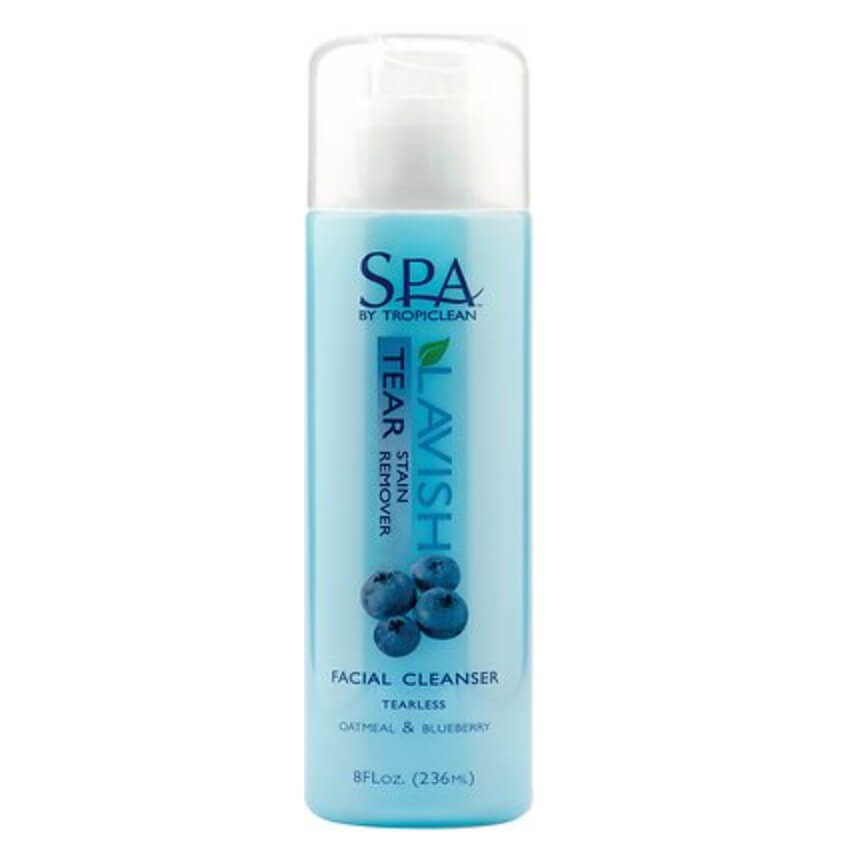
Miracle Care Sterile Eye Wash Pads for Dogs & Cats
If you’re looking for a more convenient option, then you might love these Miracle Care eye wash pads instead. These pre-soaked eye wash pads are super easy to use. Just take one pad, squeeze excess liquid into the eye, and use the pad to remove any dirt and debris from the fur. Not only do these pads remove those dark-colored tear stains, they also get rid of any bacteria that could cause infections. One of the most notable ingredients in this formula is boric acid, which is a safe and effective compound to get rid of porphyrin stains.
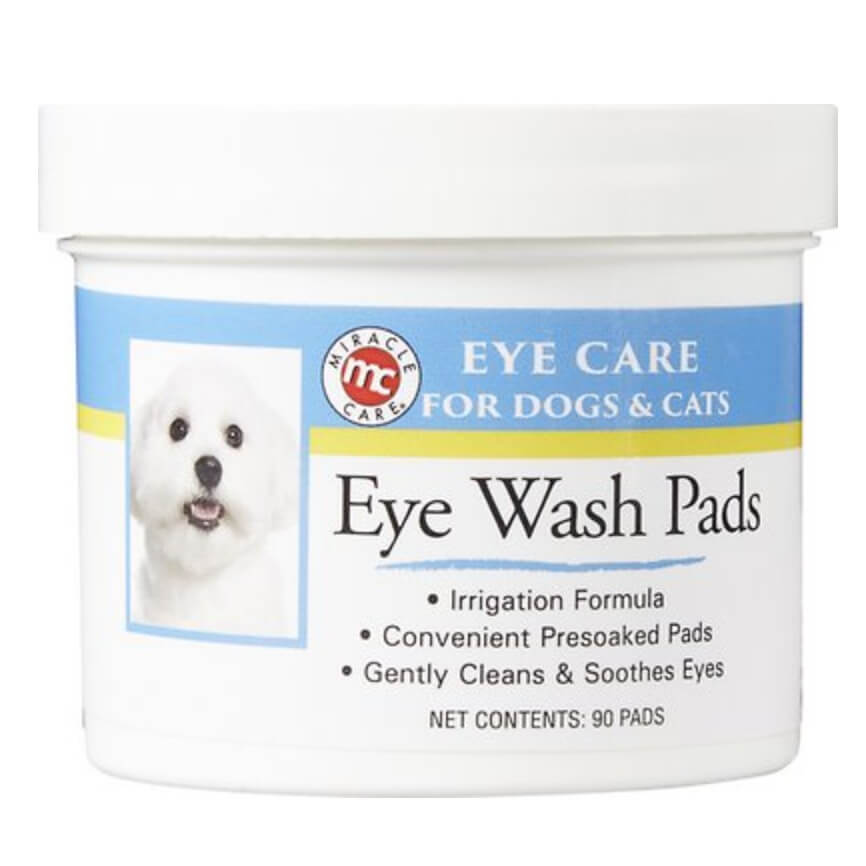
Nutri-Vet Dog Eye Rinse
The Nutri-Vet eye rinse is an excellent choice if you’re looking for something that not just deals with dark eye stains, but also helps reduce irritation. This formula contains boric acid, which makes it an excellent product to relieve any discomfort and pain. It’s perfect for relieving allergic reactions, combating eye infections, and it also relieves discomfort caused by dried mucus. This eye rinse has a super gentle formula, making it suitable even for the most sensitive puppy eyes. You can either use it in case of emergency or apply it every day to prevent tear stains.
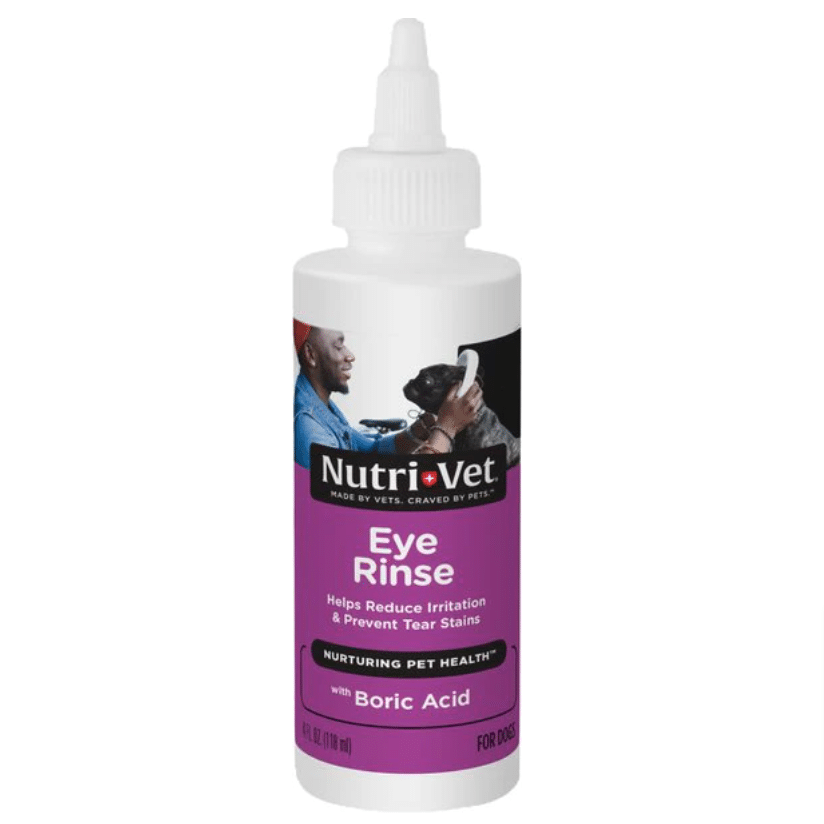
Angels’ Eyes Natural Chicken Flavored Soft Chew Tear Stain Supplement for Dogs & Cats
In addition to topical treatments, you can also opt for something to prevent tear stains from the inside out. These Angels’ Eyes Tear Stain Soft Chews are packed with natural antioxidants that provide antibacterial and anti-inflammatory benefits for your pup. Plus, they contain zero dyes, wheat, corn, soy, or antibiotics! Just a few of these chicken liver flavored chews a day is guaranteed to keep your pup wanting for more, while getting rid of those pesky tear stains for good.
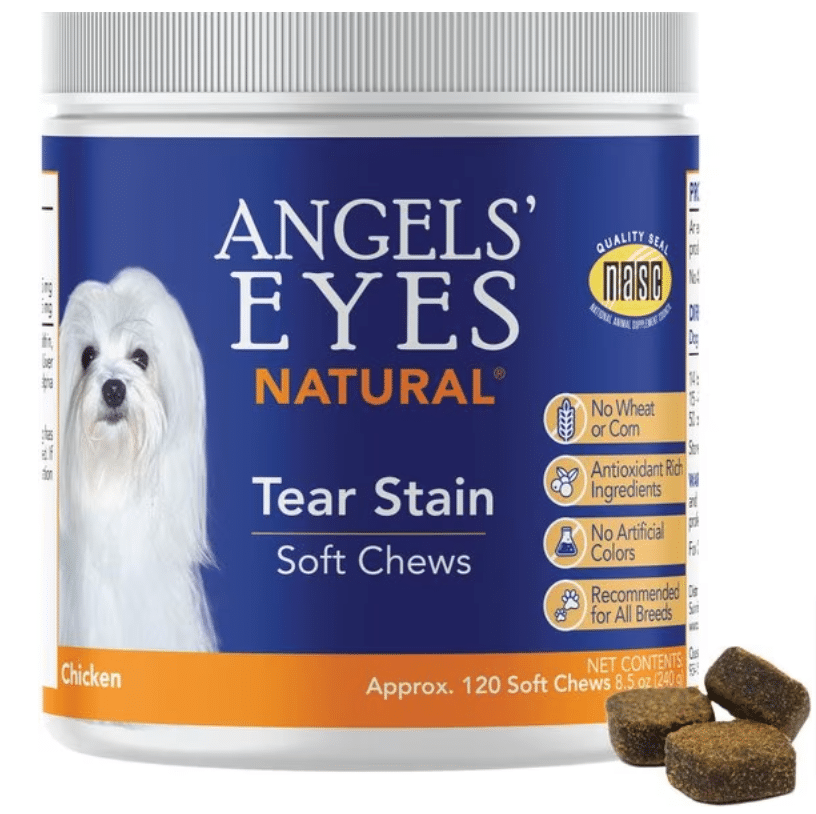
How To Get Rid Of Dog Eye Stains: The Do’s And Don’ts Of Removing Dog Eye Stain
To sum up, let’s quickly go over the do’s and don’ts on how to get rid of dog eye stains.:
- Do keep the eye area clean by removing any gunk daily.
- Do make sure the eye area is neatly trimmed.
- Do feed your pup healthy, balanced, and high-quality dog food.
- Do opt for stainless steel food and water bowls.
- Do provide your dog filtered water if your tap water is naturally rich in iron.
- Do use lubricating eye drops in case your pup has an allergy.
- Do use a dog-safe and vet-approved tear stain remover.
- Do contact your vet immediately if you suspect a health condition is to blame for excessive tear production.
- Don’t blindly trust all natural home remedies you hear or read about. Natural doesn’t necessarily mean better.
- Don’t feed your pup any dog food that contains unnecessary fillers, artificial flavors, colors, or preservatives.
- Don’t use plastic food or water bowls.
- Don’t EVER use any bleach, alcohol, or other highly irritating and toxic ingredients around your dog’s eyes.
- Don’t use any human eye drops or makeup removers around or in your dog’s eyes.
How To Get Rid Of Dog Eye Stain: FAQs
Dog tear stains may go away only if your pup’s excessive tear production is caused by teething. However, those tear stains won’t magically disappear on their own. We recommend you keep the eye area clean by removing any eye gunk daily, trimming the hair around the eyes, and feeding them a healthy and balanced diet. Of course, if the issue is caused by an underlying medical concern, contact your vet for the most appropriate solution.
Coconut oil doesn’t remove dog tear stains per se, but it could be beneficial in preventing them. If you opt for a high-quality, extra virgin coconut oil, it’s likely safe to use on the fur around the eyes.
Brachycephalic breeds are most prone to getting tear stains, including Boxers, Pugs, Maltese, Boston Terriers, Yorkshire Terriers, and Bulldogs, to name a few. Likewise, tear stains tend to be more prominent in light-colored dogs.
Dog groomers use the same tactics for getting rid of dog eye stains – they trim the hair around the eyes, clean them with stain remover solution or wipes, and use a tear stain remover comb if necessary.
Indeed, vaseline can be a safe and cost-effective home remedy to prevent your dog getting dark tear stains, as it’ll form a protective layer around the eyes. Be sure to dab it gently onto the fur around the eyes with a cotton swab, not getting any of it into the eyes, as this could cause irritation.
How To Get Rid Of Dog Eye Stain: Final Thoughts
Those dark-colored tear stains are all too common in dogs, and you might’ve even accepted that there’s nothing you can do about it. However, with simple lifestyle and dietary changes, you can actually prevent this issue and keep your pup’s eyes looking beautiful and clean at all times. We hope these tips on how to get rid of dog eye stains have been helpful, so that you can tackle this issue using caution, common sense, and following vet-recommended guidelines.
Want to Learn
DIY Doodle Grooming?
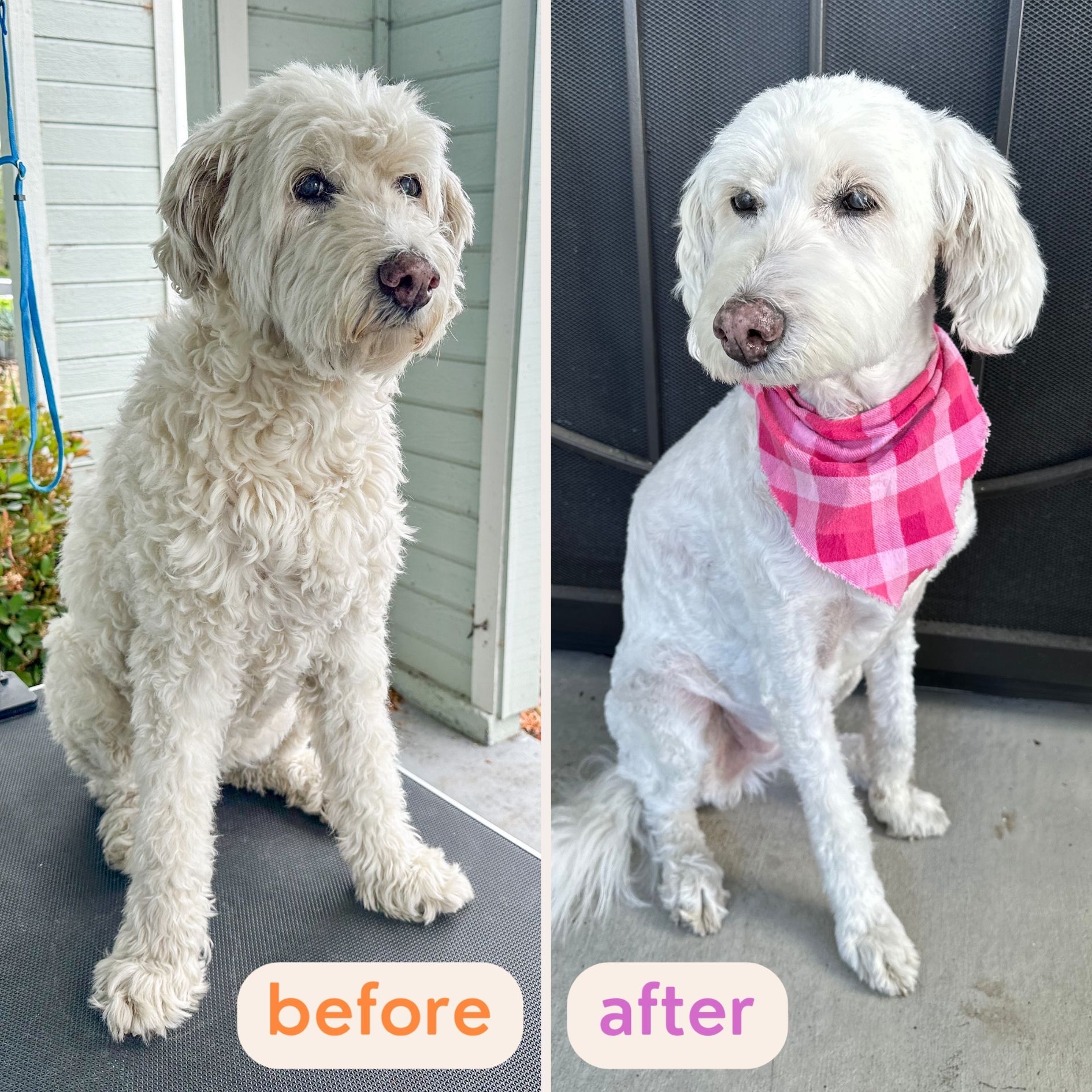
 “Every concern and question I had now has clear, practical solutions.” – Paula D.
“Every concern and question I had now has clear, practical solutions.” – Paula D.
 “These lessons have provided tremendous amounts of information.” – Steve B.
“These lessons have provided tremendous amounts of information.” – Steve B.
 “Buy the course and complain about how easy it is!” – Chris S.
“Buy the course and complain about how easy it is!” – Chris S.
Learn How To Groom Your Doodle At Home…
Safely…And Without Confusion:

